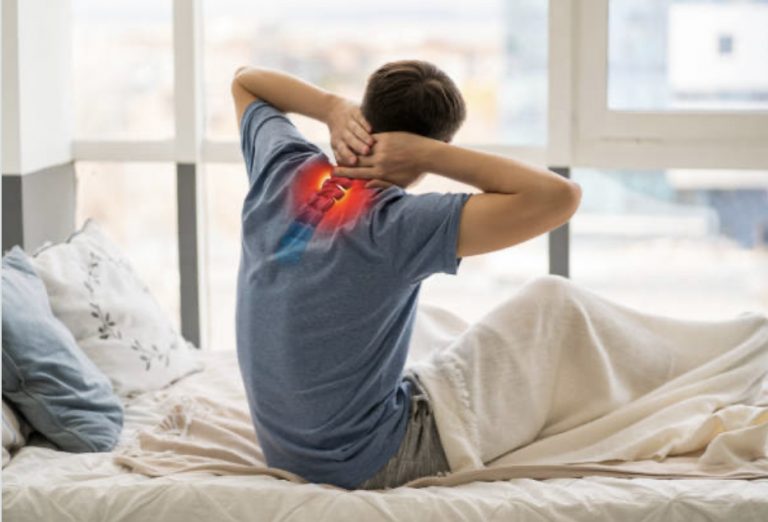As we get older, the cartilage that encases our joints and allows them to move smoothly begins to wear down. This is a very natural process, in fact, the CDC reports that it affects over 32.5 million US adults. When this happens, the bones begin to rub together and form bone spurs. Bone spurs can irritate nearby nerves and form degenerative joint disease in the spine. As a result, degenerative joint disease symptoms such as pain, tingling, and numbness can develop.
Common causes of degenerative joint disease in the spine can be by any action or factor that wears down the joints. For instance, if you participate in high-impact sports like football, your joints are regularly forced to absorb shock and can wear down faster than if you play a less intense sport. Or, if you’re carrying a lot of excess weight, more pressure is placed on your joints than if you have a healthier weight.
Other causes of degenerative joint disease in the spine, also known as osteoarthritis, include aging, having a physically demanding job, and being inactive. While degenerative joint disease can develop anywhere in the body, the most common body part to develop this condition is the spine, due to its many joints and the constant pressure they endure.
Though the condition may sound serious, degenerative joint disease in the spine is incredibly common. There are a variety of methods available to help reduce the degenerative joint disease symptoms, such as conservative courses of treatment prescribed by your doctor or surgical alternatives like the treatments outlined in the following article. Depending on the causes of degenerative joint disease, the condition will be approached differently.
How is this Spinal Condition Diagnosed?
After experiencing degenerative joint disease symptoms, you should schedule a visit with your doctor. You should prepare to discuss your and your family’s medical history. Your doctor will likely then perform a physical evaluation that includes feeling for painful areas and conducting movement tests to check for diminished range of motion.
In order to confirm a diagnosis, it may also be necessary to perform diagnostic and lab tests. These may include:
- X-ray
- CT scan
- MRI
- Blood Work
- Discography
How is Degenerative Joint Disease in the Spine Treated?
If a diagnosis of degenerative joint disease is made, initial treatment is usually conservative in nature. Depending on your degenerative joint disease symptoms, you will follow a combination of different treatment methods. If a full course of conservative treatment is unable to provide relief, a physician may recommend surgery. You can find a descriptive summary of treatments here. The following conservative treatments may be recommended for degenerative joint disease in the spine:
- Anti-inflammatory medication
- Physical therapy
- Low-impact exercise
- Stretching
- Intermittent rest
BEST Health System
Oftentimes, the causes of degenerative joint disease is unclear and is a result of the natural aging process. However, this does not mean that there is nothing you can do. BEST Health System offers patients minimally invasive surgery that allows for a quicker recovery period and less intense surgery. Reach out to BEST today to learn more about your treatment options.
